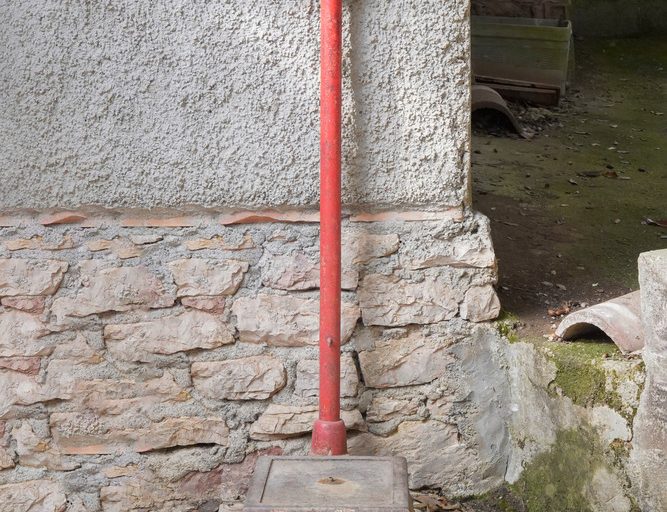Vaso tipo totem (Vase similar to a totem) (1950) This artwork includes both traditional elements and breaking points in Brajo’s art. This vase is
Author: adminfuseum
Cromoggetto (1950)
Cromoggetto (1950) The artwork uses wire mesh extensively. Wire mesh is an object taken from a non-artistic context and it changes its function. In
Friuli, Gemona (1976)
Friuli, Gemona (1976) This large-format artwork is inspired by a news report: the earthquake that hit the city of Gemona, in Friuli, in 1976.
Elleno (1969)
Elleno (1969) Elleni is a series of anthropomorphic statues made of recycled materials. They were made after the artist reflected on the accusation made
La corsa (running), from the Olympians collection, 1960
La corsa (running), from the Olympians collection, 1960
The construction of the Fuseum begins in 1960, the same year as the Olympic Games in Rome. Brajo Fuso is inspired by this event and creates the Olympians collection. These sculptures, made of reinforced concrete, surround the central part of the park and introduce the visitor to the Brajta. Brajta is the little house where Brajo and Bettina, his wife, used to spend short summer periods, interchanging their residence between the centre of Perugia and Montemalbe.
[audio src="/wp-content/uploads/2022/07/ENG_La-corsa-running-from-the-Olympians-collection-1960.mp3"]Figurative material
Figurative material
In the Fuseum, the walls of each building become places for creating artworks. Here, Brajo Fuso paints and affixes scarp materials, interchanging human figures and geometric layouts. This work shows a creative style and the absence of stylistic barriers.
[audio src="/wp-content/uploads/2022/07/ENG_Figurative-material.mp3"]Detail of La Cocciaia
Detail of La Cocciaia
In some parts, the pavement of the Fuseum is composed of not only stones or ceramic fragments, but also other materials, such as wrecked cars (radiators and various metal objects). In this case, a radiator grille of an old car has been used. The shininess of the metal enhances the geometric layout and the balance among the elements composing the grille.
[audio src="/wp-content/uploads/2022/07/ENG_Detail-of-La-Cocciaia.mp3"]La bilancia (The scale), 1961
La bilancia (The scale), 1961
This old scale is one of the three jokes that Brajo Fuso used to make to his guests. They were asked to test it. However, this is not a common scale, since at the Fuseum nothing is as it seems. To those who have the courage to step on it, the scale will make a surprise, as proof of the multitude of odd things that are in the park.
[audio src="/wp-content/uploads/2022/07/ENG_La-bilancia-The-scale-1961.mp3"]La cocciaia
La cocciaia
This space is called La Cocciaia. Its pavement was made by Brajo Fuso with ceramic fragments, in order to make a colourful mosaic where it is possible to walk on. The walls are decorated with paintings of mechanical structures and robots. Bizarre statues of fictional characters are leaning against the wall. The general feeling that this place conveys is mental escapism, a value which is embodied by the Fuseum on the whole.
[audio src="/wp-content/uploads/2022/07/ENG_La-cocciaia.mp3"]Poetic underpass
Poetic underpass
Crossing the poetic underpass means taking a journey into the literary world of Brajo Fuso. Passages from his novels show the fervid imagination of the artist and his ability to create fantasy places, allegorical characters and a fairy-tale atmosphere of which the Fuseum is a clear example.
[audio src="/wp-content/uploads/2022/07/ENG_Poeticunderpass.mp3"]













